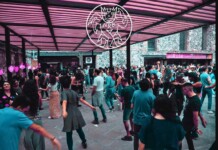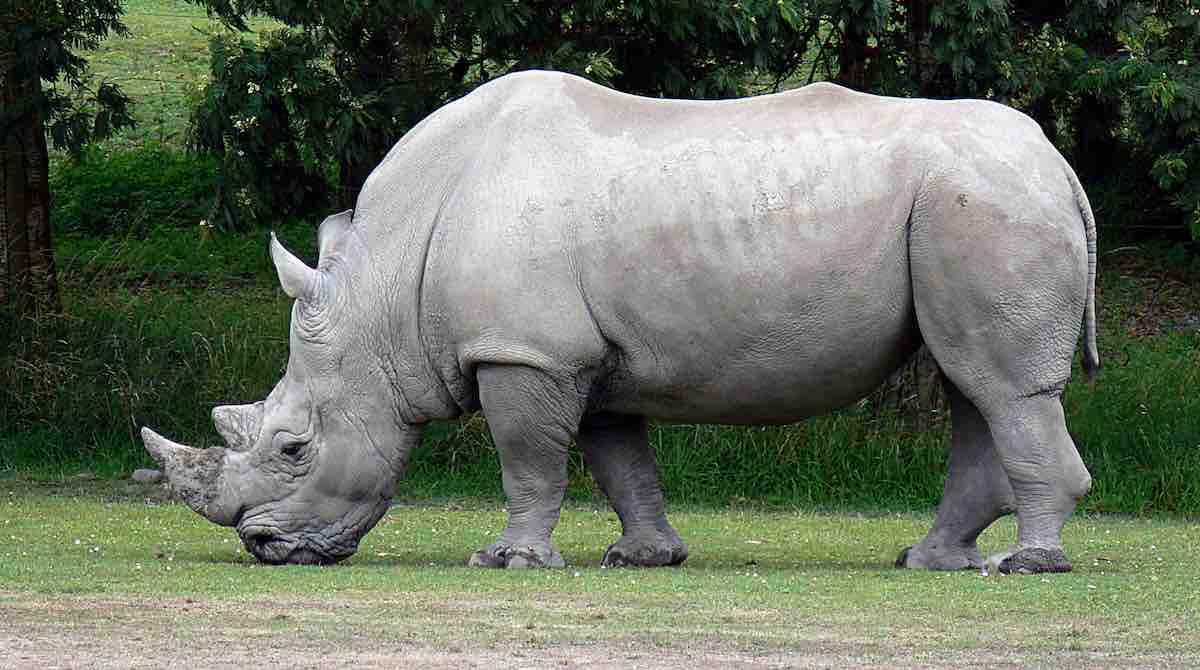Northern white rhinos are functionally extinct, as only two females of this species are left on the planet – but there is still hope for the species thanks to a revolutionary scientific breakthrough.
An international team of scientists has successfully created the first ever test tube rhino embryos from southern white rhino eggs and northern white rhino sperm using assisted reproduction techniques.
“These are the first in-vitro produced rhinoceros embryos ever. They have a very high chance to establish a pregnancy once implanted into a surrogate mother,” says Prof Thomas Hildebrandt of the German Leibniz Institute for Zoo and Wildlife Research in Berlin.
The team successfully managed to adapt reproduction techniques used in horses to the special circumstances of rhino species, opening up the potential to bring back the species from the brink of extinction. This would be achieved by adopting the procedure pioneered here, to oocytes to be collected from the last two living northern white rhino females. Female southern rhinos could act as surrogate mothers to a fledging northern white rhino population. In contrast to the northern species, there are approximately 21,000 southern rhinos in Southern Africa today.
RELATED: World’s Second Largest Coral Reef Has Just Been Removed From Endangered List
The oocytes were collected from southern white rhino females in European zoos and then shipped to AVANTEA, a world leader in assisted reproduction technologies (ART) for large animals in Italy. Several embryos are now cryopreserved for future transfer into surrogate mothers to carry a pregnancy to term.
“Our results are solid, reproducible and very promising. Now we are well prepared to go to Kenya and collect oocytes from the last two northern white females in order to produce pure blastocysts where both eggs and sperm are from northern whites,” Hildebrandt comments. The scientists performed more than twenty oocyte collections in southern white rhinos within Europe, generating more embryos than those reported in the publication. They are currently working on the embryo transfer procedure.
However, because there are only two females left and the available semen comes from only four males, assisted reproduction and in vitro fertilization techniques alone would likely not suffice to create a self-sustaining population of NWR with the necessary genetic diversity. This is why the scientists are working on an additional approach through stem cell technology.
LOOK: 700 Acres of Massive 1,000-Year-old Redwoods Are Being Turned into a Public Park
Combining stem cell research with the now developed ART will provide a blueprint on how to save highly endangered species that have already dwindled to numbers that make conventional conservation efforts impossible.
“This research is groundbreaking. We are witnessing the development of a method that can help to compensate the negative impact of humans on nature. We are very thankful for all donations received from private people supporting our race against time. We hope that the current achievement will help us to convince more people as well as public authorities that this new approach is feasible and worth supporting,” said Steven Seet, head of press and communications at the Berlin research center.
The research was published in Nature Communications back in July.
(Source: Forshungsverbund Berlin)
Preserve Positivity By Sharing The Good News With Your Friends – Representative photo by IIP Photo Archive, CC




















